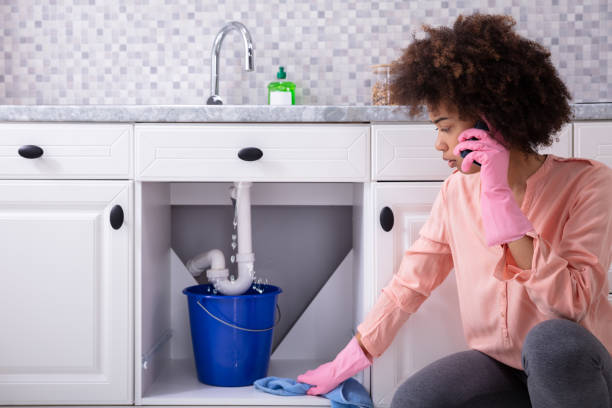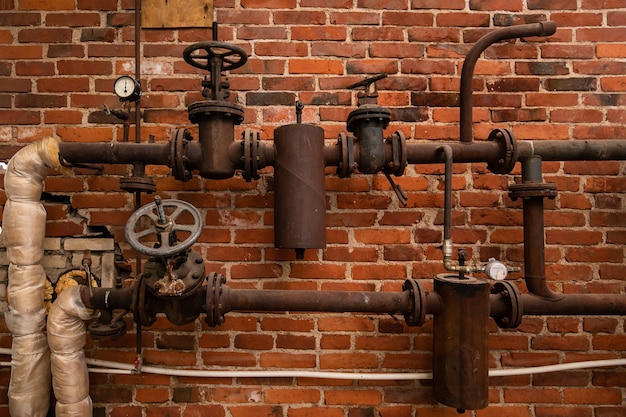Strategic Ways to Manage Plumbing Issues in Older Homes
Strategic Ways to Manage Plumbing Issues in Older Homes
Blog Article
Just how do you really feel about Common Plumbing Challenges In Old Buildings?

Older homes frequently come with appeal, personality, and background, yet they can also bring a host of plumbing concerns. Whether you're managing maturing pipes, low tide stress, or leaks, understanding just how to deal with these common problems is important to keeping a risk-free and useful home. In this guide, we'll discover the regular pipes obstacles encountered by older homes and give functional services to keep your plumbing in top form.
Recognizing Usual Plumbing Issues
Aging Pipelines
One of one of the most typical concerns in older homes is maturing pipelines. Depending upon the period in which your home was built, the pipelines might be made from products that have actually weakened over time, such as galvanized steel, cast iron, and even lead. These products can rust, become fragile, or establish leaks, causing water damage and prospective carcinogen.
Low Tide Stress
If you're experiencing low tide stress, it could be due to natural resources, corrosion inside the pipelines, or old components that are no longer operating successfully. This can be a significant aggravation, particularly in areas like showers and sinks.
Leaking Pipelines
Leaks are an additional regular concern in older homes, often caused by rusty or worn-out pipes. Also tiny leaks can cause significant water damages, mold and mildew development, and increased water bills otherwise resolved promptly.
Out-of-date Fixtures
Obsolete plumbing components such as faucets, bathrooms, and showerheads not only look old yet might likewise be less effective, susceptible to leaks, or inappropriate with contemporary pipes standards.
Pipeline Deterioration
Corrosion is an usual trouble in older pipelines, specifically those made from galvanized steel or cast iron. Rusty pipelines can limit water flow, cause staining, and at some point bring about leakages or pipe ruptureds.
Examining the Condition of Your Pipes
Inspecting Noticeable Pipes
Beginning by examining any visible pipes in your home, such as those in basements, crawl spaces, or under sinks. Try to find indications of rust, leaks, or rust, which can show underlying concerns.
Looking for Leakages
Look for leakages by inspecting areas around taps, bathrooms, and under sinks. You can additionally monitor your water meter prior to and after a duration of no water utilize to spot hidden leaks.
Water Top Quality Testing
Older pipelines can influence the high quality of your water. Conduct a water top quality test to check for impurities such as lead, rust, or various other impurities that might be presented by maturing pipelines.
Solutions for Usual Plumbing Issues
Replacing Aging Pipes
If your home has old, deteriorating pipes, consider replacing them with modern-day products like copper or PEX. This can be a substantial financial investment, yet it will certainly stop future problems and enhance the security and dependability of your plumbing system.
Dealing With Low Tide Stress
To repair low water stress, beginning by cleansing or replacing old components and getting rid of mineral build-up in the pipes. If the trouble continues, it may be needed to replace areas of corroded pipelines.
Fixing and Replacing Dripping Pipes
For small leakages, you can make use of pipeline clamps or epoxy putty as a temporary fix. Nevertheless, it's finest to replace dripping pipes totally to prevent more damages.
Upgrading Fixtures
Updating old fixtures to modern, water-efficient versions can enhance your home's pipes efficiency and minimize water usage. Seek components with the WaterSense tag for the very best performance.
Handling Pipeline Corrosion
If your pipelines are corroded, changing them with corrosion-resistant products like copper, PVC, or PEX is the very best service. Regular examinations and water high quality upkeep can help stop better corrosion.
When to Call a Specialist
While some pipes issues can be taken care of with DIY solutions, there are times when it's ideal to call a specialist. If you're managing major leakages, substantial corrosion, or are unclear about the condition of your pipelines, a certified plumbing technician can give experienced assessment and repair service.
Preventive Upkeep Tips
Regular Examinations
Frequently examine your pipes system for signs of deterioration. Catching problems early can prevent costly repairs down the line.
Water Stress Law
Guarantee your water pressure is within the suggested variety to avoid stressing your pipelines and fixtures. A plumber can install a stress regulator if required.
Water Top Quality Maintenance
Mount water filters or conditioners if your water quality is poor. This can protect your pipelines and fixtures from damage brought on by hard water or contaminants.
Positive Pipe Replacement
If your home has very old pipelines, take into consideration proactive replacement prior to significant concerns occur. This can conserve you from emergency repair services and water damages.
Final thought
Dealing with pipes issues in older homes calls for a mix of vigilance, preventative upkeep, and timely upgrades. By recognizing the typical challenges and understanding when to seek specialist assistance, you can ensure your pipes system stays practical and trusted for several years ahead.
Common Plumbing Issues in Older Homes and How to Fix Them
Owning an older home in Australia comes with its unique charm and a set of challenges, especially when it comes to plumbing. The Sunshine Coast has many older properties that can harbour plumbing problems that aren t just inconvenient but potentially costly. Here s a look at some common plumbing issues in older homes and expert advice on how to handle them.
Outdated Piping Materials
Many older homes were built with galvanised steel, cast iron, or even lead pipes, materials that are far from ideal by today s standards. Galvanised pipes are prone to corrosion and clogging, while lead pipes pose serious health risks.
How to Fix:
Replacing old pipes is a job for a professional. Upgrading to copper or PVC piping not only enhances water quality and flow but also increases the property s safety and value. If you suspect your home has outdated materials, a licensed plumber can conduct a thorough inspection and recommend the best course of action.
Corrosion and Pipe Degradation
Over time, exposure to water and minerals can cause pipes to corrode, leading to leaks, bursts, and water contamination. Corrosion is especially common in homes over 50 years old.
How to Fix:
Regular inspections can catch early signs of corrosion. If corrosion is found, the affected section of piping often needs to be replaced. For homes with extensive corrosion, a complete plumbing overhaul might be necessary. It s crucial to consult with a plumbing expert to understand the extent of the issue.
Tree Root Intrusion
Older neighbourhoods usually have mature trees whose roots can intrude into pipe lines, causing blockages or damage. This is particularly problematic for sewer lines, where roots seek out water sources.
How to Fix:
A plumber can use a specialised camera to inspect sewer lines for root intrusion. If roots are a problem, methods like root cutting or hydro-jetting can clear the obstruction. In severe cases, part of the pipe may need replacing. Consider root barriers around the piping to prevent future issues.
Inadequate Water Pressure
Low water pressure in older homes can be due to various factors, including corroded water lines, sediment build-up in pipes, or outdated fixtures.
How to Fix:
First, check if the low pressure is isolated to one area or throughout the house. Replacing old fixtures can sometimes resolve the issue. However, if the problem is more widespread, it might be due to sediment or corrosion. Flushing the system or replacing the affected pipes usually restores normal pressure. Again, a professional assessment is advisable.
Outdated Fixtures
Older homes often feature fixtures that are not only visually dated but functionally inefficient. This includes everything from toilets and taps to showerheads and washing machine hoses.
How to Fix:
Updating these fixtures can improve both water efficiency and the aesthetic appeal of your home. Modern fixtures are designed to conserve water, which can significantly reduce your water bill and lessen your environmental impact.
Conclusion
Maintaining the plumbing in an older home requires a proactive approach. Regular checks and updates are key to preserving these beautiful properties. If you re facing plumbing issues in your older home, it s best to call on experienced professionals like Green & Gold Plumbing & Gas. With the right expertise, even the most daunting plumbing problems can be resolved, ensuring that your home s character is maintained while its functionality is enhanced.
https://gandgplumbing.com.au/common-plumbing-issues-in-older-homes-and-how-to-fix-them/

I am just very intrigued by Main Plumbing Issues Found in Old Houses and I really hope you liked our page. Liked our write up? Please share it. Let another person discover it. We enjoy reading our article about .
Click Here Report this page